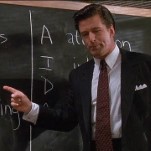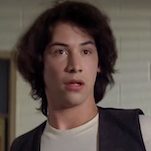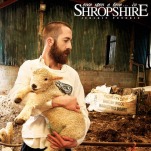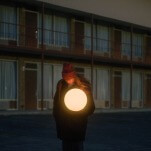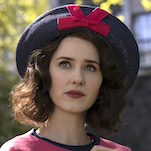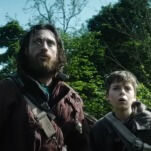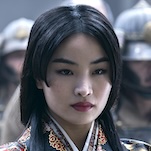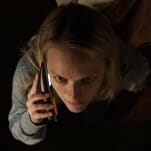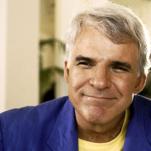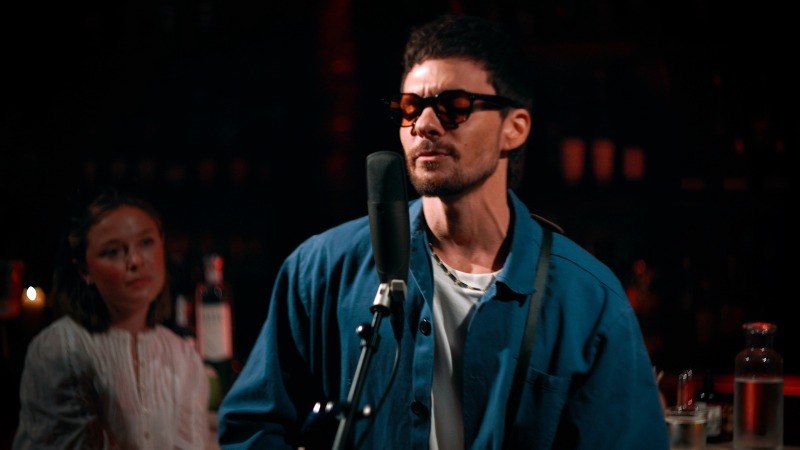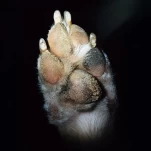Toon In: Animated TV Highlights for December, from Holiday Specials to the End of What If…?
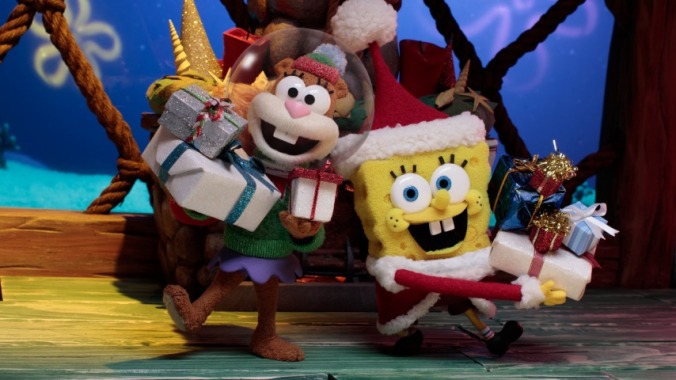
Welcome to the ink, paint, and pixel corner of Paste TV, where we’re highlighting some of the best premium animation projects on streaming or direct-to-video aimed for teens and adults. This monthly column not only provides an overview of the new animated shows to check out this December, but we’ve also collected some of the finest creators and voice talents in the medium to give updates, or introductions, to their series.

Arcane Season 2 Post Mortem (Aired November 23)
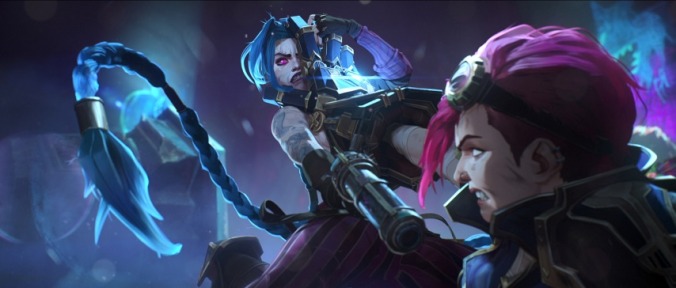
With ‘The End’ scrawled in Jinx’s (Ella Purnell) handwriting, Netflix’s Arcane came to a close leaving the stories of those who survived the onslaught of Viktor (Harry Lloyd) and Ambessa’s (Ellen Thomas) attack in a hopeful place, including the implied outcome that Jinx survived and finally got a ride on one of those airships she’s admired going back to when she was Powder.
Soon after the finale, co-creator Christian Linke let Paste know that they officially started breaking the story for Arcane Season 2 in 2019 so this resolution has been a long time coming for both the makers and the audience.
“You know where you want to send the characters, where you want to take them and their arcs and their changes and who they become,” he says of what they determined first for this season. “But the plot, you really build out. Every season is its own beast. There’s an economy to building a season that is just its own behemoth effort. There’s just a natural process where you really build this structure, knowing where the characters are supposed to start and end, but the rest evolves together.”
Linke also confirms that they didn’t have that final visual of the airship moving away from Piltover coming into writing Season 2. That, and the decision to end the credits without a signature Arcane song composition, came in the making of the finale. “You just kind of go with what feels right,” he says. “But I will say this, credits always get cut by Netflix, and so it’s a little bit like, it doesn’t really matter what you do, because it’ll get severed anyway, which is a bit unfortunate.”
Asked about a sequence or episode that felt like a big swing, even for Arcane, in Season 2 and Linke says “Pretend Like It’s the First Time” was an idea presented to them by Fortiche animation studio. “We took that idea, and then worked out the story aspects on the LA side with the writers of Season 2, Alex [Yee] and Amanda [Overton] and I,” he says. “But yeah, it was Fortiche that had this idea of what if we could have this pocket episode where we just have a mini story within the season.
“Then, there was a lot of anticipation around, for the first time, visualizing Ekko [Reed Shannon] and Jinx in 207 because it’s just such a different rendition of Jinx than we’ve ever seen before,” Linke continues. “But it was so fascinating to think about what could have been, this version of Powder where she never had this dark turn. It’s bittersweet, because you look at her and it makes you so happy to see her happy. But also, Jinx is cooler. But at this human cost that feels kind of uncomfortable to admit. It’s really complex.”
Linke adds that the series finale, “The Dirt Under Your Nails,” also engendered a lot of anxiety because of their cumulative need to land it right. “I would say the last episode was scary, because it was quite a bit longer than the rest. And the fact that it’s final,” he offers. “Everyone was like, hammering away.”
And what we see as an audience is what they made. “With [any] things that are left, usually we only try to trim fat,” Linke says of their lack of deleted scenes. “I can’t think of any things where it was like a full story that was taken out. This is kind of the purest form of [the show].”
Looking ahead, Linke told Dexerto that they are a year into the development of their next League of Legends series, and that the worlds of Noxus, Ionia, and Demacia will be featured. He also confirmed to us that every series will have its own identity. “There’s a certain Fortiche look,” he says. “But I think there’ll always be the desire to find a stylization, some kind of adaptation, based on the specific characters in the specific region.”
SpongeBob & Sandy’s Country Christmas (December 2)
Going back to the origins of SpongeBob SquarePants, creator Stephen Hillenburg was always all about getting weird. Even beyond his wacky community of Bikini Bottom denizens, Hillenburg was a proponent of mixing into the show live action, stop motion animation, 2D title cards and surreal elements. While he passed away in 2018, Hillenburg’s ethos of always experimenting was passed along to current executive producers Marc Ceccarelli and Vincent Waller who continue to run the franchise. They’ve taken it to heart to keep Hillenburg’s spirit alive, as evidenced with the franchise’s latest holiday special, the stop motion tour de force, “SpongeBob and Sandy’s Country Christmas,” which debuts December 2 on Nickelodeon and Paramount+.
Brought to life by Screen Novelties Studios—who worked with Hillenburg directly on their first SpongeBob holiday special in 2008, “It’s a SpongeBob Christmas!,”—“SpongeBob and Sandy’s Country Christmas” is a 25th anniversary celebration and sequel to this year’s feature release, Saving Bikini Bottom: The Sandy Cheeks Movie.
Having had so much fun creating the Cheeks family of circus squirrels for the movie, Waller tells Paste they thought the holidays would be a perfect excuse to get them all down to Bikini Bottom and in Sandy’s underwater world. “It’s a well thought out unit,” he says of the crazy family. “And when you’ve done 25 years, another person and another voice and another idiosyncrasy to latch onto and go, ‘But look at this!’ is great.”
Ceccarelli continues, “I think the biggest difference in this one is all the country trappings. That’s not something that we usually play with on SpongeBob and I gotta say, that’s another reason that I’m so excited about using the Cheeks family more and more in this show. They bring this whole different flavor that we’ve kind of avoided. I don’t think most of us are really into modern country music, but we do like classic country music. So, it’s something that we looked forward to playing around with and spoofing.”
For Screen Novelties, this is their third episodic holiday special for the SpongeBob universe, and their second Christmas stop motion special. Co-director/producer Mark Caballero tells Paste that for this special they got to redo all of their original puppets to upgrade them with today’s materials and rigging technology. “We take the puppets out of storage and we have our puppet department just give them all a once-over. Sometimes we’ll reuse some pieces of the puppets that were done before. Other times, we’ll make completely new versions of them.”
For this special, they also had to construct the entire very limber Cheeks family who flip and fly through every frame. “Obviously, in 2D animation, you can make drawings much more quickly. But in our world, we have to make everything and it’s a very laborious process,” producer Chris Finnegan details. “But we try not to let that hold us back. It’s a fun challenge to figure out, how do we make the stop motion characters have the same energy and elasticity that they might have in 2D animation?”
Co-director/producer Seamus Walsh adds they make sure all of their blocking is thoroughly considered and planned so they can get their five seconds of footage every day during the production period, while still leaving space for all of the organic gags featured throughout the special.
“We love the reverence and outside-the-box silliness that SpongeBob already has,” Caballero continues. “They don’t take themselves seriously, and they love embracing the lo-fi thing where you can see the strings on the puppet. They’re so smart on honing in on those gags.”
In keeping with that, the Screen Novelties team added a lot of their own visual Easter Eggs for audiences to discover, but they point out to look for the Hillenburg House placed within Bikini Bottom which they found in an early featurette that they reproduced for this special to honor Stephen’s spirit.
Jentry Chau vs. The Underworld (December 5)
In every generation, audiences get a ‘Chosen One,’ AKA a reluctant teen slayer of all things supernatural. Millennials had Buffy the Vampire Slayer. For Gen Z, their fighter is Jentry Chau (voiced by Ali Wong), the witty, Chinese-American kid hiding her generational powers until a demon king with an agenda comes looking for her in rural Texas. The Jentry Chau vs the Underworld premise will be familiar to those who like their snarky teens dusting it up with monsters used as metaphors for the horrors of puberty. Creator Echo Wu livens her show up with an array of multicultural characters, some very quirky monsters, and a lot of current pop cultural inspirations drawn from K-pop, anime, and Eastern mysticism.
Creature Commandos (December 5)
James Gunn officially kickstarts his leadership of the DC Universe with his adaptation of the DC Comic’s Creature Commandos. The first season of the Max series has seven episodes and begins with Gunn’s bridging character, Amanda Waller (Viola Davis), commissioning the black ops unit from a secret level of Belle Reve prison. They’re meant to take care of the world’s messier danger zones, off the radar and without government oversight. Led by human General Rick Flagg Sr. (Frank Grillo), the team consists of Nina Mazursky (Zoë Chao), G.I. Robot (Sean Gunn), Doctor Phosphorus (Alan Tudyk), the Bride (Indira Varma) and Eric Frankenstein (David Harbour). Darkly comedic and featuring hard R-rated content, Creature Commandos has all of Gunn’s favorite tropes from the dysfunctional found family, to plenty of surprising, gnarly violence.
That Christmas (December 6)
For everyone who considers Richard Curtis’ Love, Actually a must-see watch during the holidays, he’s back writing about the holiday but this time for animation. Adapting his own book trilogy, That Christmas and Other Stories, Curtis collaborated with legendary animator Simon Otto to bring to life his world of characters in the CG animated feature, That Christmas, for Netflix.
For Otto, That Christmas represents his feature directorial debut after spending decades establishing the character designs in films like the How to Train Your Dragon trilogy and other DreamWorks Animation projects. Otto tells Paste that he worked with Locksmith Animation for years to find the right project to make his own, and then he was given Curtis’ Christmas books and was told that he was also writing the screenplay.
“The moment you can be associated with a legendary filmmaker and screenwriter like Richard Curtis, you jump at the chance,” Otto says with enthusiasm. “And for a feature directorial debut, for me to be a single director working with Richard Curtis is not only an amazing opportunity, and you think you can bring something to it, but it’s also, ‘Oh, my God, I’m gonna get a free film school’ being able to download the wisdom and knowledge from Richard. I really had this really lucky path to actually be the director. I was the first person on the project, and I’m still here, which is a tremendous experience and privilege.”
Otto says what appealed to him from the start in Curtis’ script was the multi-threaded storyline that connected all of the generations of this small town together. “As you can see, even with How to Train Your Dragon, is my love for an ensemble cast and finding ways to make these characters really stand apart from one another. I think the key element for me is really understanding what makes them entertaining. We must have [an audience] believe in who these characters are, and take the charm and appeal and timelessness that animation can bring. And that, to me, was going to be the secret sauce: Great music and great writing with a Richard Curtis script that we were going to get really clever, sketch-based comedy with lots of emotion and wish fulfillment. But also transport an audience into the world of animation, where they forget that they’re watching animation, but also embrace the fact that they’re watching animation. It’s kind of a fine line that we wanted to walk.”
Otto says he reunited with character designer Uwe Heidschötter to create the cast of characters, then brought in producer Adam Tandy (Inside No.9) to get authentic British casting, and had Curtis weigh in with his thoughts on whom they were considering.
“We did a series of drawings,” Otto says of their entire cast of characters. “Then, we did several voice tests—using these editorial drawings with this kind of Ken Burns effect — with the actors speaking roles that we think were sounding very similar to how I imagined the characters, and you could immediately see whether it worked or not. And that was our process.”
Secret Level (December 10)
As the co-founder of VFX company Blur Studio, Tim Miller has been in the trenches working alongside some of the world’s best CG animation studios creating for film, television and gaming. Knowing the talent in his field spurred Miller to co-create for Netflix Love, Death & Robots, a short story anthology told with CG animation. It became a showcase for some of the best creators working in computer animation, and an incubator for next generation talent.
Now, Miller and executive producer Dave Wilson are shifting their attention to the world of videogames with their new CG anthology series, Secret Level, for Amazon Prime. They created partnerships with an array of game development companies, from Sony to Capcom and Wizards of the Coast, to create animated short stories within their IP.
“The first step is we met with the game devs, the IP holders and the publishers,” Wilson says of how they set up the individual stories with their various partners. “We’d take everything that they do and don’t want to do with the episode, their franchise lore and everything like that, and distill it down into a creative guide.”
They circled up the writers they worked with before on Love, Death & Robots and had them pitch individual stories within that curated IP. “We’d take that pitch and have them turn it into a short story,” he continues. “That short story then gets adapted into a screenplay. So, it allowed us to have multiple voices in the space for the games, rather than just Tim and I.”
Miller confirms the first season features 15 original episodes that cover the gamut of gaming interests. “To get a little of something for everybody, there is such a wide variety, from genres like fantasy versus horror, first person shooters, or board games, or adventure games. There’s indie nostalgia games, which we were very motivated to get into the show, to the big Triple A titles that everybody knows, to games that are not out yet, which we knew would be a big component of the show. You’ll also notice that a lot of [companies] were clients of Blur, because they trust us. This was a completely different idea. Nobody had done anything like this but they trusted us that it would be cool, and they trusted us to take care of their IP because that’s what we do.”
What Miller and Wilson are excited for audiences and hardcore game fans to see is the variety in which they handle the different properties. “If it’s an IP establishing its footing, like Exodus, we tried to stay very faithful to what the game will be, in the style that they’re setting out to create,” he explains. “With things like Pac Man or Spelunky, where there’s a bit more room for interpretation, we took the chances where we can to add variety to the show. Like, we weren’t going to create a platformer for Spelunky, so Derek Yu who created Spelunky, gave us a lot of free rein. Obviously, one of his characters is identifiable and familiar to his fan base. But where we can, we definitely try to do something different, not just with the story, but with the art style too.”
Miller adds, “I’ll say, for my part, that I’m really proud of the emotional content of the stories. Many of them are very moving, in a way that you don’t necessarily expect videogames to do. The potential is certainly there but it’s just usually lost underneath the explosions and guns and ammo gathering. Dave is excellent at finding the emotional core of the story and bringing it front and center. And I think that’s what will ultimately make the show much more interesting to a wide audience, as well as the gamers that play it. Plus, it’s beautiful.”
Wilson concedes it’s the most complicated project that he’s accomplished in his career, but it creates a new breeding ground for experimentation and proof of concept making in the videogame field. “It wasn’t like we set out to create 15 pilots but I think the show really gives us an opportunity to test the development and execution of videogame IP at a level where we can take more risks than you traditionally get. I think if we pitch that Pac Man idea as a $100 million feature, no way,” he laughs. “Also, what’s pretty great about the series is, as much as we’d like to presume that we know everything about what our audience wants, we don’t. Anyone who tells you otherwise, is lying to you. So, I feel like when you put these episodes out there, it really is interesting to see how people respond to it.”
Dream Productions (December 10)
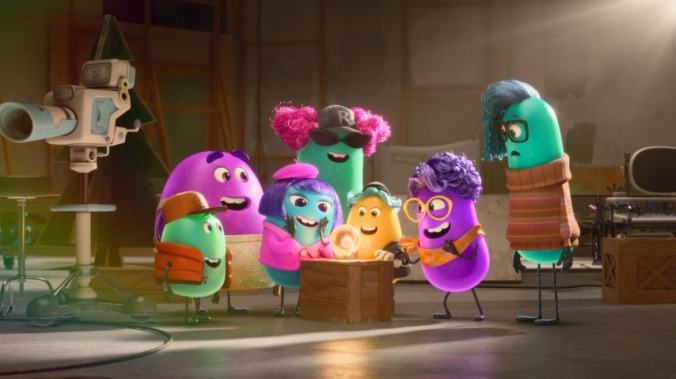
As the highest grossing domestic film of 2024, Inside Out 2 proved that families and animation fans were still very much invested in observing all of the awkward stages of growth in young Riley Anderson’s (Kensington Tallman) life. Luckily, Pixar Animation had the foresight to develop a bridging series for Disney+—Dream Productions—at the same time as Inside Out 2 was in production. Now this series of four episodes drops December 10, and focuses on the area of Riley’s brain that manifests all of her dreams, good and bad.
Framed in a “mockumentary” format, Dream Productions is told from the dueling perspectives of dream directors Paula Persimmon (Paula Pell) and Xeni (Richard Ayoade). They rule Riley’s imagination and have very different approaches to conceptualizing her big tween-dreams.
Storyboard artist and director Valerie LaPointe worked on both Inside Out films, and is one of three directors on Dream Productions. She tells Paste that she was already invested in shaping Riley’s childhood and was thrilled to be invited into this new way to play inside her head.
“What I was drawn to when I came on the show early on, was you have Paula and Xeni, and they’re so opposite of each other,” LaPointe explains. “They’re butting heads from the start which is fun to watch. And if you look closely, you do see Paula in the movie. So I think enough people have seen the movies and are excited about them, that they’ll get really excited to dive into this little niche aspect of Riley’s world.”
LaPointe says from the start, Dream Productions was developed in parallel with Inside Out 2 and that benefited the ambitions and continuity of this series. “Ideas were being developed together, which was intentional because then we could share assets, and build back and forth which was great,” she says. “It really expanded what we were able to do with the quality of the TV series, and also being able to pull from each other’s props and sets and to be inspired. Story wise, it also informed this too because you’re thinking that we take place between the movies, so what has Riley dealt with and then what is she going to deal with after this? It was interesting to think of our story as fitting between that. In this one, she’s 12, so what’s the step between her next big experience?”
LaPointe directs the first two episodes, with Austin Madison and Mike Jones directing the other two. All three storyboarded for the series and then transitioned into directing roles. “From the start, the idea was that there would be multiple episodes, but one broader, bigger story, where they all connect,” LaPointe explains. “But breaking it up into each episode was new for us. The series format was really, really exciting for everybody who got a chance to work on it here. By having episodes, the directors were able to add a little personal flavor to their stories. Like, there’s a musical number that Riley is experiencing and that’s very me. And the specifics of the experiences in the other episodes are very much like the other directors. It’s probably the most collaborative thing I’ve done, where we were all really bringing parts of ourselves to it.”
As for the future of Dream Productions, LaPointe says there isn’t a concrete plan for future seasons but she’s hopeful. “Having been part of each one of the films and this, you bring pieces of yourself into it,” she explains. “In turn, you start to really come to love and care about these characters that you create. So it feels like it’d be great if more happens. And I certainly loved doing the job.”
Marvel Animation’s “What If…?” Season 3 (December 22)
The third and final season of Marvel Studios’ What If…? gets another holiday season event drop with a new episode dropping daily on Disney+ starting December 22. Bryan Andrews, executive producer and director since Season 1, tells Paste that this collection of eight episodes is “a bit wilder and more unique” than they’ve done before.
“In Season 1, we played a little closer to the cinematic universe because that’s what the higher ups wanted us to try and do as a way to educate, or bring the audience from the movies,” Andrews explains. “In Season 2, we got to spread our wings a little bit more. But in Season 3, we really got to go for it. And oddly enough, a couple of the ideas are ones that were kicking around since Season 1. We had crazy ideas for Season 1, but they chose the ones that were a little bit closer to the movies.”
Having worked with Marvel Studios off and on as a storyboard artist and an action sequence developer going back to Iron Man 2, Andrews admits that What If…? has become the repository of some of his favorite ideas that didn’t find a home in the live action films. “In Season 2, there was some stuff during that big desert battle when they’re fighting Ego, some of the stuff that Thor was doing is stuff that was actually going to be in Thor: The Dark World, but never quite made it. So I was able to pilfer and put that in, which is fun.”
As for new material, Andrews says there is a lot, including a new Howard the Dark adventure which is a continuation of what they introduced in Season 1. There’s also an Agatha Harkness-centric episode that features a musical moment unlike anything seen in the MCU. “I don’t want to say it’s a song and dance number, but it is kind of a big song and dance number in the middle of that one. In The Eternals, there was the hint of a Bollywood number but that was never big enough for me. I thought we could use a lot more Bollywood, and a lot more swing dancing, so I combined the two in a crazy sequence that is the linchpin moment of the episode that works like gangbusters.”
Andrews confirms that “Go-Avengers: Heroes of the Gamma War” will be the MCU’s interpretation of Mecha animation featuring their crazy lineup of heroes including Sam Wilson’s Cap, Black Widow, Red Guardian, Shang-Chi, Monica Rambeau, and Moon Knight.
“At the beginning of the episode, there’s a real extra special treat, which I really wanted to do,” he teases. “It only lasts for 30 seconds, but it’s awesome. And it could be its own show. I really hope that people vocally approve and then maybe we’ll start that show. But the thing is, it’s still the What If…? universe, even though they’re giant Mecha and they’re fighting kaiju, or giant gamma monsters. It’s not like we suddenly switch the animation style and become an anime, even though we had talked about that in the past. Years ago, we talked about how every episode could be its own unique animated look. But the budget wouldn’t really allow for that, as fun and awesome as that would be. But the Voltron/Power Ranger fun is in this one.”
He also promises the return of the original What If…? Indigenous character, Kahhori (voiced by Devery Jacobs), in this season and the introduction of one more brand new, original character. “I’m just glad that we’re able to bring in something new and that people thought that was awesome and loved it,” he says of Kahhori. “And there’s another new character. I won’t give too much away, but there are a couple brief images of her in the trailer. People are already like, “Who the heck is that?” And, yeah…that’s the new one!”
Asked if this is really the end of Marvel Studios’ first animated series, Andrews says he’s hopeful that it’s not. “I don’t think there’s any kind of super hard ending that means the book is forever closed,” he offers. “This is not official. This is just me, but I think of it more as a break. We can end a certain run of stories that we were telling, because it really is endless.”
Tokyo Ghoul Box Set (December 31)

Crunchyroll celebrates the 10th anniversary of the modern anime classic Tokyo Ghoul with a complete series Blu-ray box set release at the end of the month. The box set includes every episode, and all specials and special episodes. There are select episode audio and video commentaries, the “Jack” and “Pinto” OVAs, the “Kaneki in Black and White” featurette with the English dub cast and crew that discusses questions and themes of the anime, and more.
Wallace & Gromit: Vengeance Most Fowl (January 3)
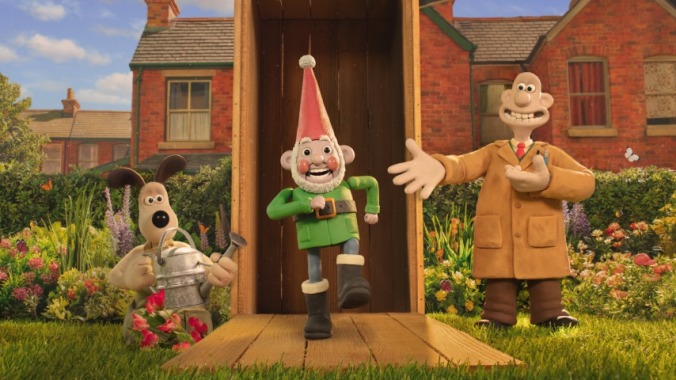
Time to make up a cheese board and cozy up to your favorite pooch, because after a 16-year absence, we’re finally getting a new Wallace and Gromit stop motion feature adventure from Aardman Animation. Directed by Nick Park and Merlin Crossingham, Wallace & Gromit: Vengeance Most Fowl debuts January 3 on Netflix.
“It’s like getting back with old mates again,” Park tells Paste about finally returning to the characters. “There’s something very familiar and it’s exciting because they’re like a platform for endless jokes and gags.”
In this outing, Wallace’s inventing goes into overdrive when he creates Norbot, a robotic ‘smart gnome’ who can take care of all of the tedious chores in your home and garden. He ends up putting wedge between clueless Wallace and his long-suffering beagle, Gromit. Then things go from bad to worse when an imprisoned Feathers McGraw returns to exact his revenge upon the pair.
The ambition of Vengeance tops all of their previous films, featuring an array of sets, locales, digital elements, water gags and a massive third act set piece that Tom Cruise would find worthy. Crossingham says they took 15 months to shoot the film using their stop motion animation techniques, augmented with some VFX support for special elements like water and compositing.
“The starting point for us for this film was always, can we do it practically, in front of the camera?” Crossingham explains. “For me, it’s really important because it’s an essential part of the Wallace and Gromit DNA. You see the thumbprints, you see that it’s been made, and we’ll go to great lengths to do it in front of the camera.”
Teasing their favorite sequences of the film, Crossingham says the shot of McGraw playing a pipe organ villainously captured in a moment the spirit of these labor intensive films. “It’s ridiculous in itself, and that’s wonderful,” he says of the penguin playing the piano. “But the bones of the film are about seating something ridiculous, and the rest will follow. But Feathers is tiny. And, quite literally, the animator did not fit in the set because it was enclosed. But it still needed to feel big and feel cinematic so we’re putting camera moves in there, getting the right camera angle, making it feel epic. I think, with the music, with the comedy, with the camera moves and the lighting and the style of it, all of those things come together to make it feel like a big comedy movie moment. It’s technically challenging, artistically challenging, and challenging from the comedy.”
Park says their climactic action sequence in the last act was a case of them envisioning something so big in scale that they had to piece it all out to figure out how to execute. “It was really trying to put that vision into reality, and ask how is this going to sustain, so we had to keep the jokes coming and figure out the practicality of that whole technique, of how to do the embankment scene.”
Tipping up that the sequence involves boats and canals, Park says their aqueduct setting that runs along an embankment was so big they couldn’t fit it into their studio so they had to shoot in a different scale and in different sections.
“We shot the embankment independently, and in layman’s terms, it enabled us to have that embankment repeated at different ways, at different angles, as often as you wanted, and at different speeds,” Park explains.
“We set the bank up three times and each time we filmed it with a very high resolution, 360 degree camera, at three or four different heights,” Crossingham continues. “We had those different heights for the camera height, and then within that, we could move the camera where we wanted. We could be close in or wide, and because we shot it very slowly, we could choose camera speeds so it gave us a lot of latitude. In all, we had three sets which probably covered the work of about 100 sets.”
Still basking in the glow of completing Vengeance, any future adventure decisions will come after this goes into wide release. But we did ask if the crisis of their modeling clay supplier closing down in 2023 had been resolved with a new supplier, thus ensuring that any new stories could be made someday. Park smiles and says fear not, “I believe that’s quite secure. Thank you.”
Tara Bennett is a Los Angeles-based writer covering film, television and pop culture for publications such as SFX Magazine, NBC Insider, IGN and more. She’s also written official books on Sons of Anarchy, Outlander, Fringe, The Story of Marvel Studios, Avatar: The Way of Water and the latest, The Art of Ryan Meinerding. You can follow her on Twitter @TaraDBennett or Instagram @TaraDBen
For all the latest TV news, reviews, lists and features, follow @Paste_TV.






